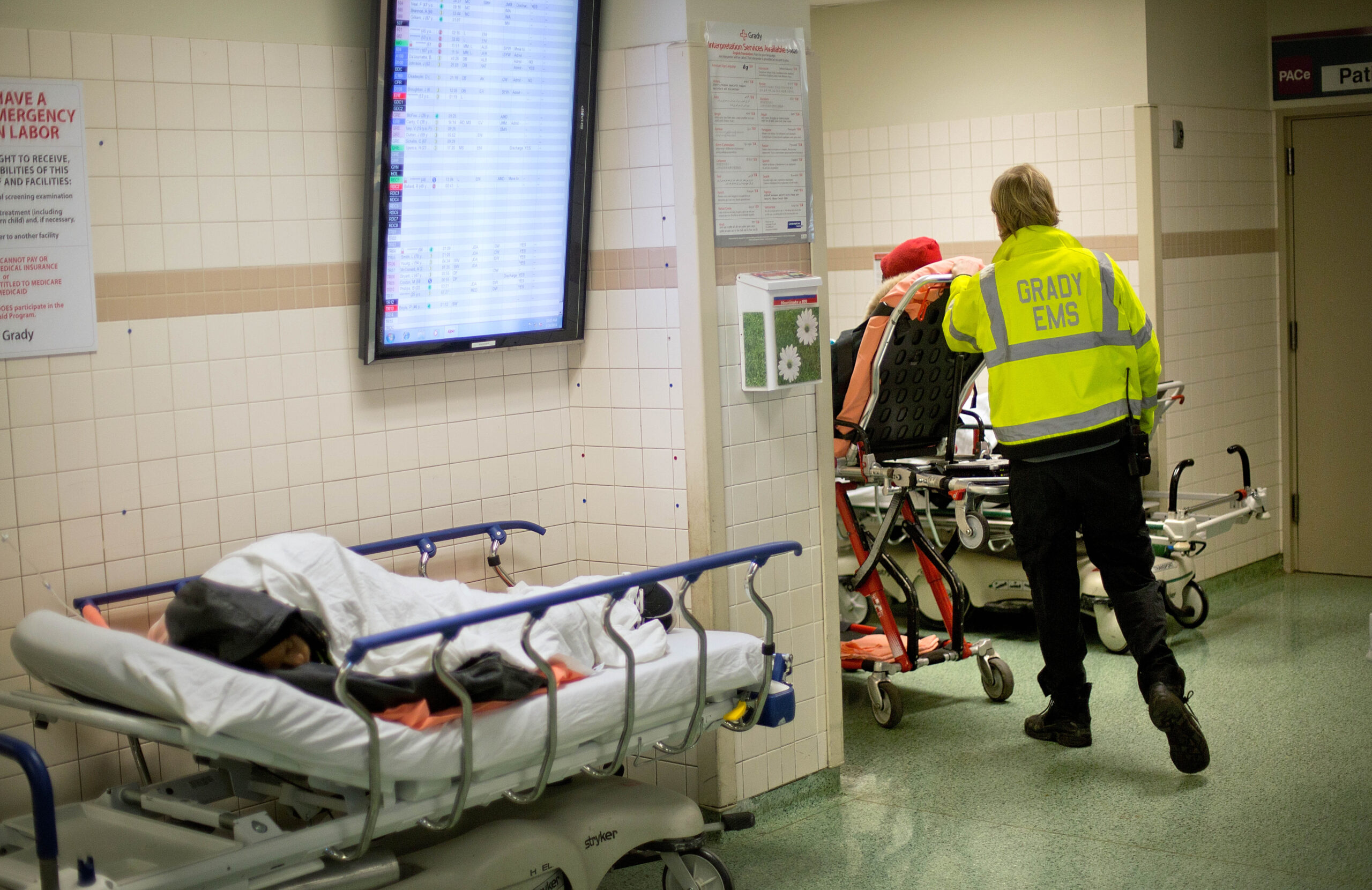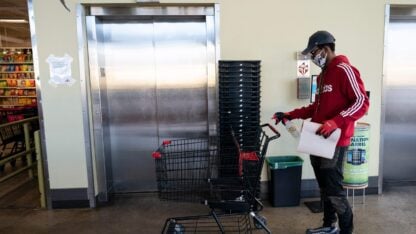Updated at 7:32 p.m. Tuesday
The head of Georgia’s largest hospital says an influx of COVID-19 patients has his facility operating at full capacity and has led to the cancellation of some elective surgeries.
John Haupert, CEO of Grady Memorial Hospital in Atlanta, told reporters Tuesday a number of hospitals have had inpatient beds filled with new coronavirus patients.
“During this second wave that we’re experiencing in many parts of the country we’re seeing double, triple the amount of COVID inpatients that we saw during the peak that we experienced in May,” he said.
As of this week, Grady is operating at 105% capacity, Haupert says. That means the hospital is treating some inpatients in the emergency department because of a lack of beds. Across the metro Atlanta region, he says, hospitals are operating at 85% capacity.
Haupert estimates that the pandemic has cost the Grady Health System $115 million dollars: $45 million in spending to develop a stockpile of personal protective equipment and a loss of $70 million from a reduction in non-essential medical procedures.
Grady isn’t the only health care system looking at a bleak financial situation as the coronavirus pandemic continues to worsen across the country. A new analysis from the American Hospital Association predicts almost half of the nation’s hospitals could end the year with negative operating margins.
“Heading into the COVID-19 crisis, the financial health of many hospitals and health systems were challenged, said Rick Pollack, the group’s president. “This pandemic is the greatest financial threat in history for hospitals and health systems.
The American Hospital Association is asking Congress for more federal aid as lawmakers mull another coronavirus relief package. The CARES Act, passed earlier this year, sent more than $100 billion dollars to healthcare facilities grappling with the pandemic.
More money will be crucial, says Grady CEO Haupert, to ensure hospitals are able to take care of a steadily increasing number of new COVID-19 patients. In Georgia, coronavirus hospitalizations have more than tripled in the last month.
“In some parts of the country, there aren’t a lot of policy decisions being made around how to limit the spread of the infection,” he said. “We are going to continue to see institutions having to back off once again on elective procedures … and the financial strain on the healthcare system intensifying.”
Georgia Is Expanding Testing With New Deal
COVID-19 testing is expanding across the state.
Monday, Gov. Brian Kemp announced a new partnership with a North Carolina-based lab.
The agreement with Mako Medical is expected to allow the Georgia Department of Public Health to process an additional 10,000 coronavirus tests a day.
A surge in demand for testing in Georgia has strained local health departments, leaving some people waiting more than a week for results.
Some Call For More Help For Food Insecurity
A new report by the advocacy group the Food Research and Action Center says more help is needed for families to get food during the COVID-19 pandemic.
Some are calling for Congress to expand SNAP benefits.
J. Lawrence Miller, president of the neighborhood association Adair Park Today, says he’s seen how food insecurity has affected his neighbors.
“Just getting to a supermarket, we’re in a food desert is near impossible and very difficult when you have to ride MARTA and you have kids. Kids are out of school right now,” he said. “If you’re a senior and you’re not driving. These are challenges that most neighborhoods face exist within our neighborhood.”
Part of the coronavirus relief package passed by Congress in March included a one-time payment of about $250 per child for food in Georgia. The program is for children who normally get free or reduced lunch at school.
CDC Study: Pandemic Has Been Deadlier For Minority Groups
In the early days of the pandemic, COVID-19 was much deadlier for minority groups than white people.
That’s according to a recent study from the Atlanta-based Centers for Disease Control and Prevention.
“More than one-third of Hispanic or Latinos who died were under age 65, compared to only about 16% of whites who died under the age of 65,” Dr. Jonathan Wortham, with the CDC, said.
The study also found about 7% of coronavirus deaths happened at home or in emergency department settings.
Hear more from Wortham, when we check in with our coronavirus podcast, “Did You Wash Your Hands?“









